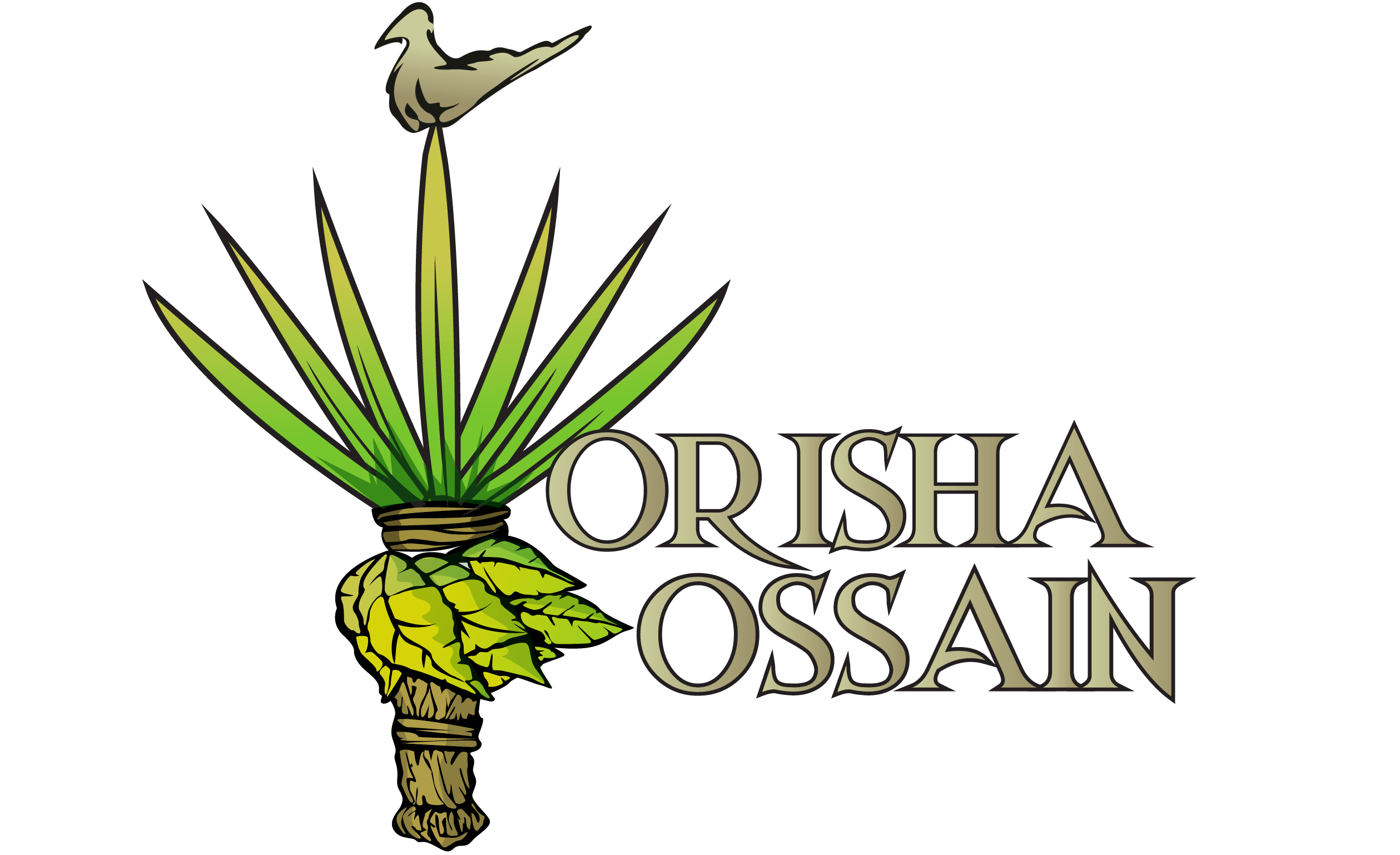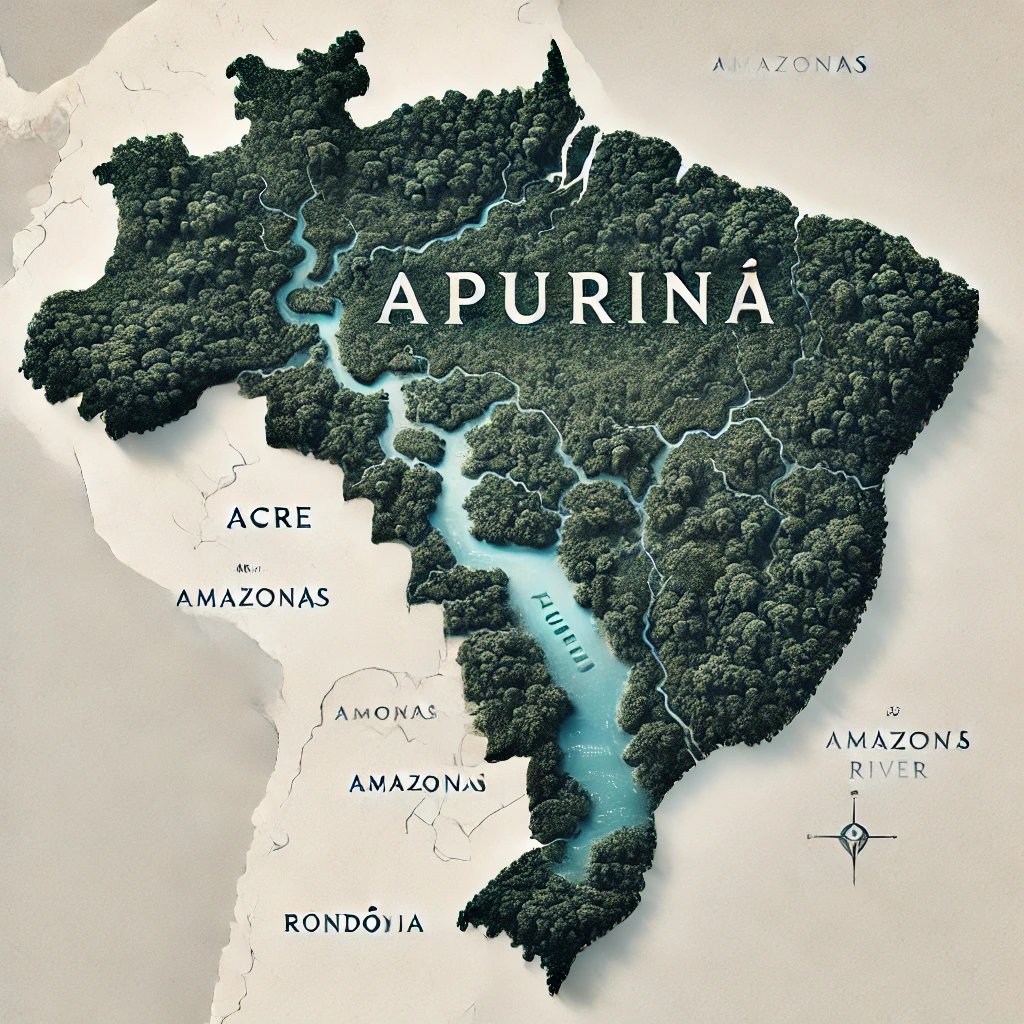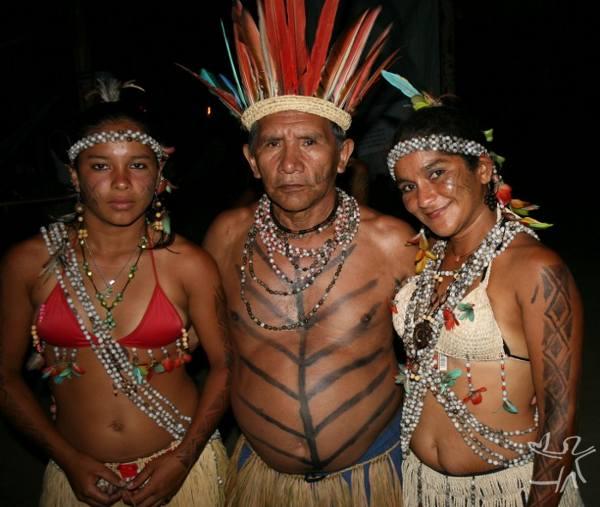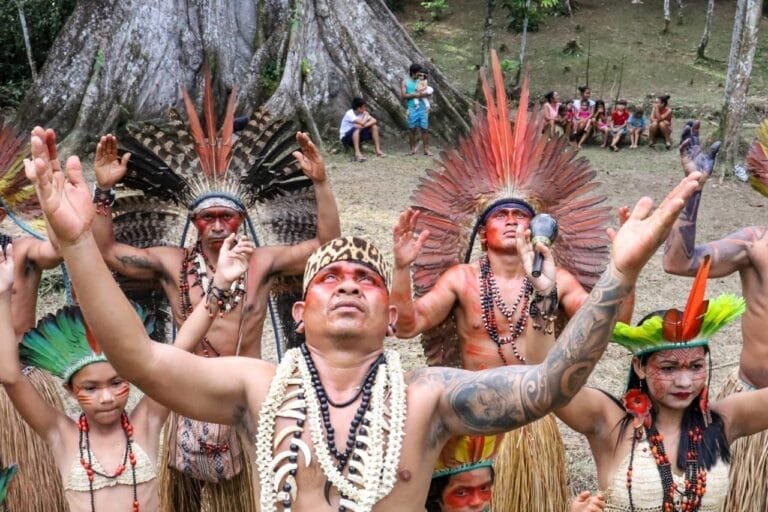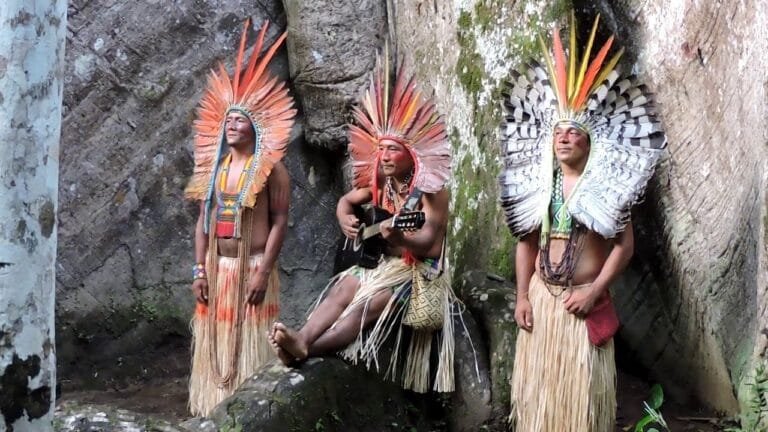The Apurinã
The Apurinã (also known as Popkiti) are an indigenous group from the Amazon rainforest in Brazil. They primarily inhabit areas along the Purus River in the Brazilian states of Acre, Amazonas, and Rondônia. They belong to the Arawak linguistic family and speak the Apurinã language, although many now also speak Portuguese due to interactions with the wider Brazilian society.
Apurinã Tribe Overview
The Apurinã are strongly connected to the Amazon rainforest. They rely on hunting, fishing, and gathering forest resources alongside traditional agriculture. Their spiritual beliefs and practices are centered on nature and shamanism. They use medicinal plants and engage in rituals that involve their traditional snuff, Awiry, which has significant cultural and spiritual value.

Population and Current Situation
With a population ranging from 2,000 to 5,000 people, the Apurinã face ongoing pressures from deforestation, land encroachment, and industrial activities in the Amazon. These threats pose challenges to their way of life and their cultural survival, but they have actively fought to protect their land rights and maintain their traditions.
Traditional Green Snuff: Awiry
The Apurinã tribe is particularly famous for their green rapé snuff called Awiry. Unlike other snuffs that contain tobacco, Awiry is typically tobacco-free and made exclusively from the Awiry plant, which grows on riverbanks and is harvested during the dry season. The plant is not fermented or heated, which allows the snuff to retain its natural green color. The preparation process is highly sacred, and the snuff is used to sharpen the senses, improve mental clarity, and strengthen spiritual connections.
Awiry is rare due to its seasonal nature, and its preparation and use are seen as a way to honor traditional Apurinã culture. It provides grounding, spiritual clarity, and even physical benefits like clearing the sinuses.
Chief Kaxuqui-Francisco Apurinã
Chief Kaxuqui-Francisco Apurinã is an important leader within the Apurinã tribe, particularly known for his activism in protecting indigenous land from illegal deforestation and forest fires in the Amazon. However, it is not clear if he is the leader of the entire Apurinã tribe, which is spread across several indigenous lands along the Purus River. The Apurinã people, like many other indigenous groups in Brazil, often have multiple leaders or chiefs, each overseeing different communities or regions.
Chief Kaxuqui-Francisco Apurinã has been recognized for his efforts in confronting environmental threats and advocating for the rights of his people. His leadership is prominent, especially in the context of defending the tribe’s land and natural resources
In Indigenous cultures, leadership structures can be decentralized, with different leaders for various clans, territories, or responsibilities, so while he plays a significant role, it may not imply leadership over the entire tribe.

If you like to know more about the Apurinã tribe and culture please click on this link to a PDF file in Portuguese. The next link brings you to a PDF in English called “I Turn into a Pink Dolphin” by Pirjo Kristina Vitanen.
